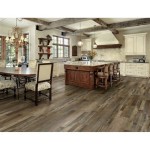Wood Boiler Radiant Floor Heating: A Comprehensive Guide
Wood boiler radiant floor heating represents a sustainable and efficient method of heating residential and commercial spaces. This system utilizes the renewable energy source of wood to generate heat, which is then circulated through a network of tubing embedded within the floor. The resulting radiant heat provides a comfortable and consistent temperature throughout the space, offering numerous advantages over traditional heating methods like forced air.
The integration of wood boilers with radiant floor heating systems requires careful planning and consideration of various factors, including the size of the space, insulation levels, climate conditions, and the specific design of the heating system. Understanding the components, operation, advantages, and limitations of this technology is crucial for making informed decisions about its implementation.
Key Point 1: Components of a Wood Boiler Radiant Floor Heating System
A wood boiler radiant floor heating system consists of several key components that work in tandem to deliver efficient and reliable heating. These components include the wood boiler, thermal storage, circulation pumps, manifolds, and radiant floor tubing.
Wood Boiler: The heart of the system, the wood boiler is responsible for burning wood to generate heat. Wood boilers are available in various designs, including conventional, gasification, and condensing models. Conventional wood boilers operate by directly burning wood in a firebox, while gasification boilers employ a two-stage combustion process that burns wood gases more completely, resulting in higher efficiency and lower emissions. Condensing wood boilers further enhance efficiency by extracting heat from the exhaust gases. The choice of wood boiler depends on factors such as heating requirements, budget, and environmental considerations.
Thermal Storage: Thermal storage, typically in the form of insulated water tanks, plays a crucial role in wood boiler radiant floor heating systems. These tanks store the excess heat produced by the wood boiler, allowing for continuous heating even when the boiler is not actively burning wood. Thermal storage enhances the efficiency of the system by reducing the number of boiler cycles and providing a more consistent heat output. The size of the thermal storage tank is determined by the heating demand, the size of the wood boiler, and the desired storage capacity.
Circulation Pumps: Circulation pumps are responsible for circulating the heated water throughout the radiant floor tubing. These pumps must be sized appropriately to ensure adequate flow rates and maintain the desired temperature in the floor. Variable-speed pumps offer enhanced efficiency by adjusting the flow rate based on the heating demand.
Manifolds: Manifolds act as distribution points for the heated water, dividing the flow into individual zones or loops within the radiant floor system. Manifolds typically include valves and flow meters that allow for precise control over the temperature and flow rate in each zone. This zoning capability allows for customized heating in different areas of the building.
Radiant Floor Tubing: The radiant floor tubing is typically made of cross-linked polyethylene (PEX) and is embedded within the floor slab. The heated water circulates through the tubing, transferring heat to the floor surface. The spacing and layout of the tubing are critical for ensuring even heat distribution throughout the floor. The tubing is typically installed in a serpentine or spiral pattern, depending on the specific requirements of the system.
Key Point 2: Operation and Control
The operation of a wood boiler radiant floor heating system involves a series of steps, beginning with the loading of wood into the boiler and culminating in the distribution of heat throughout the space.
The wood boiler is ignited and burns wood, generating heat that is transferred to the water circulating within the boiler. The heated water is then pumped to the thermal storage tank, where it is stored for later use. When heat is required, the heated water is pumped from the thermal storage tank to the manifolds and then through the radiant floor tubing. As the heated water circulates through the tubing, it warms the floor, which then radiates heat into the room.
Sophisticated control systems are essential for optimizing the performance of a wood boiler radiant floor heating system. These control systems monitor the temperature of the boiler, the thermal storage tank, and the individual zones within the building. They regulate the operation of the boiler, the circulation pumps, and the zone valves to maintain the desired temperature in each area. Weather compensation is a common feature in these control systems, which adjusts the water temperature based on the outdoor temperature to ensure consistent heating throughout the year.
Furthermore, safety mechanisms are incorporated into the system to prevent overheating and ensure safe operation. These mechanisms include temperature sensors, pressure relief valves, and automatic shut-off systems that activate in the event of a malfunction.
Key Point 3: Advantages and Considerations
Wood boiler radiant floor heating offers several advantages over traditional heating systems, but it also presents certain considerations that must be addressed during the planning and installation process.
Advantages:
- Energy Efficiency: Radiant floor heating is generally more energy-efficient than forced air heating because it heats objects and people directly, rather than heating the air. This reduces heat loss through drafts and air leaks. Wood boilers, especially gasification and condensing models, can achieve high combustion efficiency, further reducing energy consumption.
- Comfort: Radiant floor heating provides a more comfortable and consistent temperature throughout the space. The heat is evenly distributed, eliminating cold spots and drafts commonly associated with forced air systems. The warm floor surface is also a pleasant feature, especially during the colder months.
- Sustainability: Wood is a renewable energy source, making wood boiler radiant floor heating a more sustainable option than systems that rely on fossil fuels. Using locally sourced wood further reduces the carbon footprint of the system.
- Quiet Operation: Radiant floor heating systems operate silently, unlike forced air systems that can generate noise from the blower motor and ductwork.
- Improved Air Quality: Radiant floor heating does not circulate air, reducing the spread of dust and allergens. This can improve indoor air quality and benefit individuals with allergies or respiratory problems.
Considerations:
- Initial Cost: The initial cost of installing a wood boiler radiant floor heating system can be higher than traditional heating systems. This is due to the cost of the wood boiler, thermal storage, and radiant floor tubing.
- Installation Complexity: Installing a radiant floor heating system requires specialized knowledge and skills. The tubing must be properly installed and insulated to ensure optimal performance.
- Floor Height: The installation of radiant floor tubing can increase the floor height, which may be a concern in some buildings.
- Maintenance: Wood boilers require regular maintenance, including cleaning the firebox and chimney. The thermal storage tank also needs to be inspected periodically.
- Wood Storage: A reliable supply of dry, seasoned wood is essential for operating a wood boiler. Adequate space must be available for storing the wood.
- Regulations: Local regulations may restrict the use of wood boilers due to air quality concerns. It is important to check with local authorities before installing a wood boiler.
The effectiveness and efficiency of a wood boiler radiant floor heating system are also heavily dependent on the building's insulation levels. Proper insulation is crucial for minimizing heat loss and maximizing the benefits of radiant heating. Walls, ceilings, and floors should be adequately insulated to prevent heat from escaping, ensuring that the generated heat is retained within the living space.
In summary, wood boiler radiant floor heating presents a viable and sustainable alternative to conventional heating methods. It provides comfortable, consistent heat while utilizing a renewable energy source. However, careful planning, proper installation, and ongoing maintenance are essential for ensuring the system's optimal performance and longevity. Considerations regarding initial costs, wood storage, and local regulations must also be addressed before implementing this technology.

Radiant Floor Heat With An Outdoor Wood Boiler

I Built A Wood Fired Boiler For In Floor Radiant Heat My

How Heat From A Central Boiler Outdoor Furnace Gets To Your Home Wood Furnaces Of Ohio Llc

In Floor Radiant Heat With A Wood Boiler Heating Concrete Floors

Wood Boiler Meets Modern Hydronics Phcppros

In Floor Radiant Heat With A Wood Boiler Part 2

Radiant Floor Heat With An Outdoor Wood Boiler

Electric Geothermal And Wood Boilers Diy Radiant Floor Heating

Wood Boiler Meets Modern Hydronics Phcppros

Wood Stove Outside Boilers Naturalgasefficiency Org







